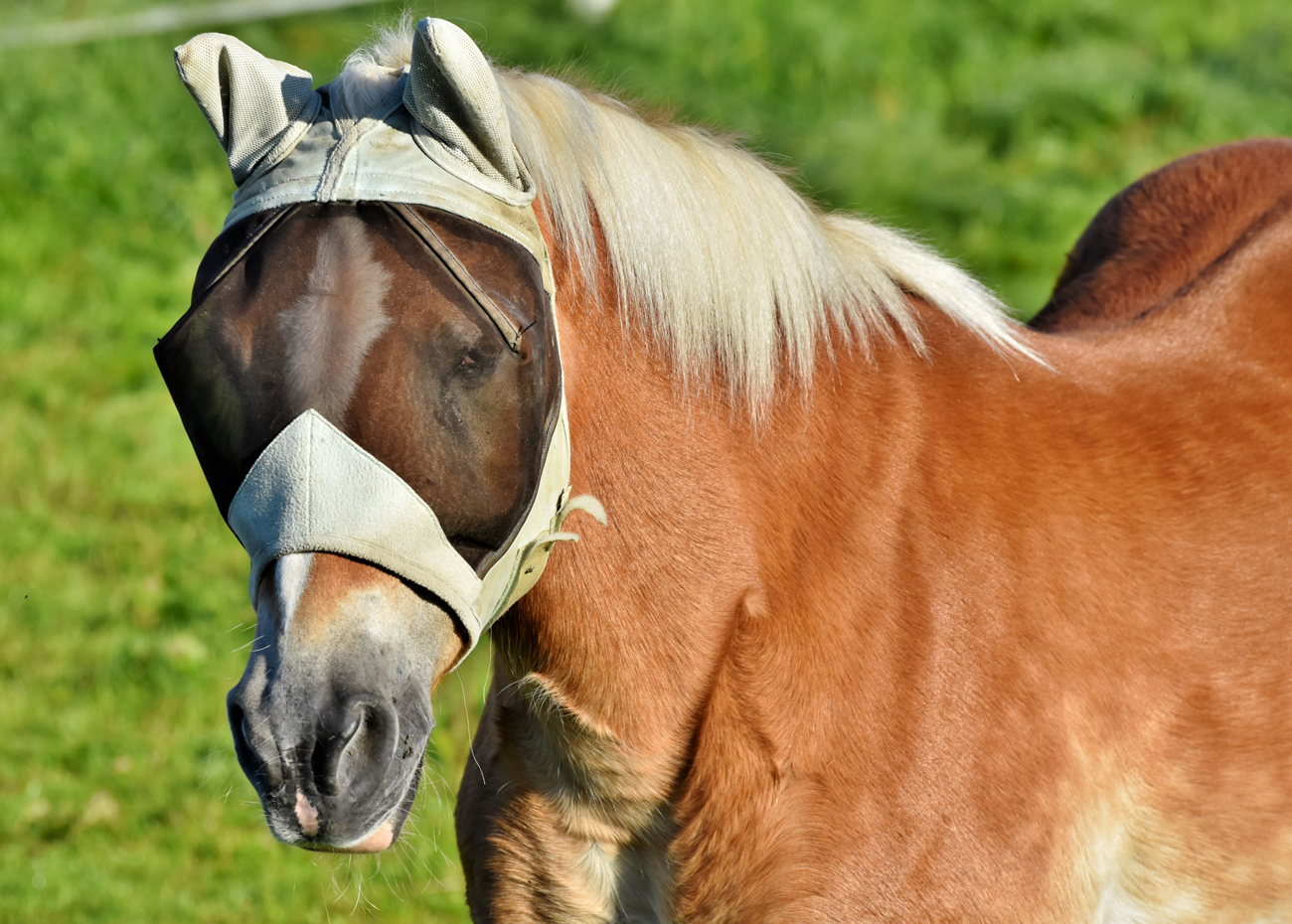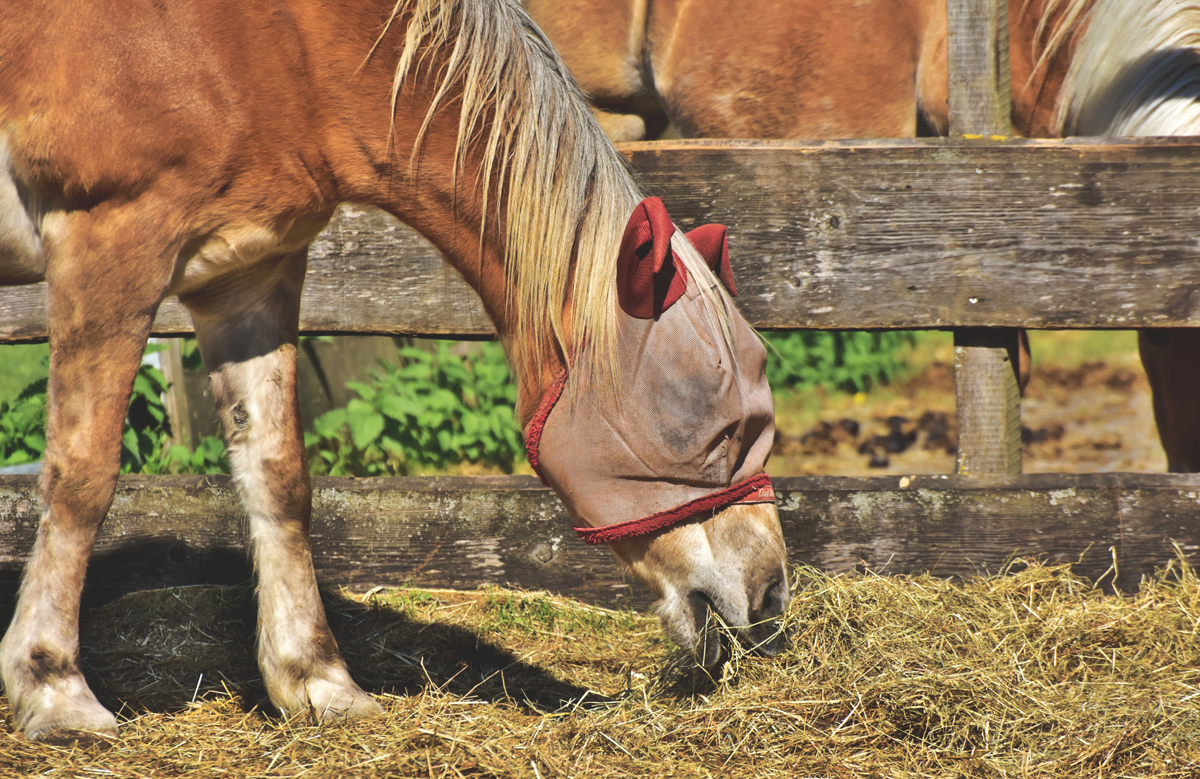Whether you’re an experienced rider bringing home a new addition to your equine family or a recent convert to the equestrian world, there are many things you can do to make your horse’s life as comfortable as possible.
So, once you’ve arranged horse insurance what other pieces of essential kit are you going to need? Fly masks are an invaluable, yet relatively inexpensive, part of overall horse care and well worth the investment.
What is a fly mask?
A fly mask is a cover used to protect the sensitive areas of the eyes, face and sometimes ears of a horse from irritating flies and other biting insects.
Masks are made from a semi-transparent mesh which allows the horse to still see through it clearly. Fleece padding is also added to protect sensitive areas from rubbing.
When to use a fly mask
Horses can become stressed by the continual fight to keep flies at bay, particularly in the warmer months. While we can easily swat flies away from our face with our hands, horses don’t have that option.
Long manes and tails are their only source of natural fly defence. However not all horses have long manes or tails, so they may not be able to cope with the sheer quantity of bugs in the atmosphere.
In herds they often use their tails to swat flies away from each other’s faces. But your horse may not have that option, particularly if it lives alone or is kept in a stall.
What’s more, if you’re training your horse for dressage or eventing, flies can distract your horse and make it less likely to follow your instructions.
While fly repellent is a very useful way to keep flies away from your equine, it’s difficult to use them safely around the eyes and mouth.
Strong sunlight can also be a problem for some horses so a fly mask can help protect their skin and eyes – particularly if it’s got UV protection built in.

Dangers of flies for horses
Apart from annoyance and irritation, flies can cause a number of health problems for horses. Flies often gather around the horse’s face and try to drink the fluid that collects at the corner of the eyes.
Because flies often carry bacteria, they can leave bacteria, larvae, and parasites on the horse’s face which can develop into problems later on.
Saliva from the bite of midges and the black fly can cause an allergic reaction in some horses resulting in Sweet Itch (also known as Insect Bite Hypersensitivity).
Subsequent intense rubbing of the mane and tail can cause some horses to rub themselves raw – thereby making them susceptible to further infections.
The British Horse Society has information on the clinical signs of Sweet Itch and how to manage and control the condition. It’s important to be as proactive as possible by taking steps before signs develop.
With or without ears?
Some fly masks come with ear covers to stop flying insects from getting in your horse’s ears. If you clip around your horse’s ears for showing, it might be wise to invest in the additional protection.
Your horse will be sure to thank you for it. However, if you do buy one with ear covers choose one with enough room for the ears to still move freely.
How to fit a fly mask
Making sure the mask fits your horse’s head comfortably is very important. So, if it’s your first time it might be worth getting someone more experienced to help.
The bottom edge of the mask should drop around an inch beneath your horse’s cheek bone to prevent flies from gaining easy entry from around your horse’s jaw.
While you don’t want to let flies inside you don’t want the mask too snug or you’ll create rubbing and sore points. Check you can slip a finger easily between the mask and the horse’s skin.
An important safety consideration to avoid eye problems is to ensure there’s no contact between the fly mask and any part of the eye (including the eyelashes).
Corneal ulcers can develop if there’s contact here, so check there’s full clearance around the eye from every angle. Both with the head up and the head down.

How to clean a fly mask
Cleaning your horse’s mask regularly is important so keep a spare available. It’s all too easy for dirt and debris to get stuck inside the mask leading to a potential source of infection and irritation.
Use a mild antibacterial soap or antiseptic solution to kill off any bacteria and then rinse well in fresh clean water before air drying.
Tips for keeping horses safe in summer
During the summer months fly protection is not the only thing you need to provide. As well as checking your horse insurance is up to date, the following must also be available to meet your horse’s welfare needs:
- access to a cool shady spot
- plenty of clean fresh water
- a salt lick to replace vital nutrients lost through sweat
- sunblock to protect exposed areas of the skin
- a regular weight check particularly when there’s plenty of lush grass
- a farrier appointment to check your horse’s feet
- nose nets to protect those irritated by pollen
- checking your horse’s vaccinations are up to date
Horse insurance cover from Equesure
No doubt you’ll spend a lot of time considering the best ways to protect your equine friend from flies and other potentially harmful insects, but what better way than to make sure you have appropriate horse insurance to cover potential problems that might arise.
The dedicated team at Equesure specialise in equine insurance and have over 60 years of combined equestrian knowledge to help tailor a bespoke plan suited to both your horse’s individual needs and your budget.
Whatever your horse’s breed or age, Equesure cover comes with a range of benefits including cover for vet fees up to £5,000 per incident, saddlery and tack cover and personal accident cover up to £20,000.
Cover for the extreme sport of horse-boarding is also now available!
Call our horse insurance team now to discuss your needs and get a quick quote today.





